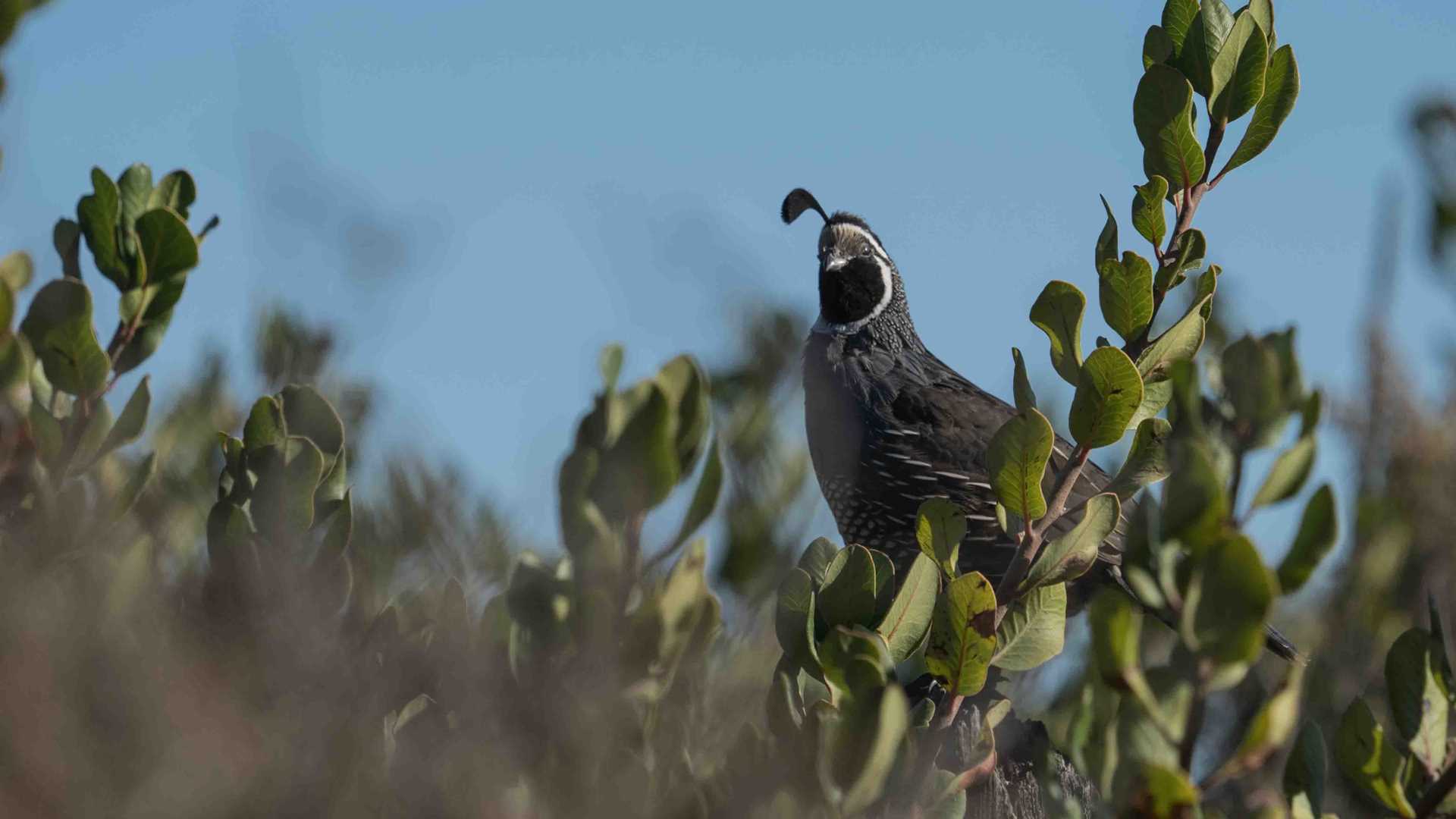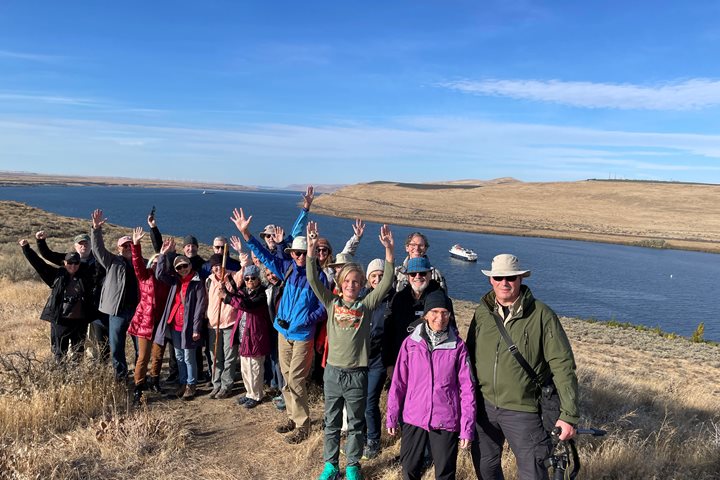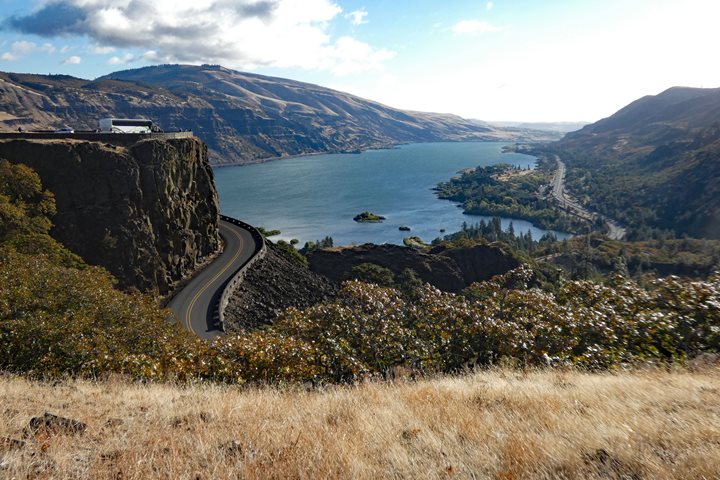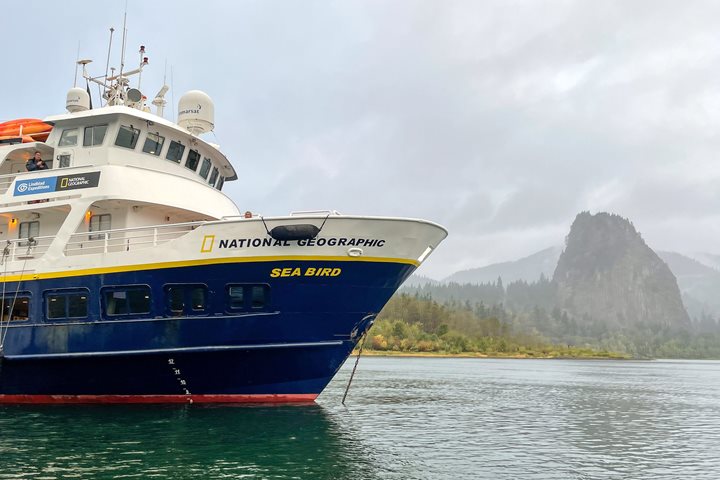As we have continued our journey through the Channel Islands National Park, we have discovered the unique story that each island here has to offer. Today we sailed towards the islands of Santa Rosa and San Miguel, the westernmost islands of the National Parks. Our morning began on Santa Rosa, the third largest of the islands with a rich history in both ranching and archaeology. Guests landed along the dramatic sandstone cliff faces that line the beach here to explore the hiking the island has to offer. Some took an adventurous hike to the rare Torrey Pines that grow only on Santa Rosa and near San Diego while others ventured into Cherry Canyon to learn about the diverse mosaic of native plants that have colonized and evolved over time. With some extra time, we were also able to paddle and swim before returning to the ship for lunch. Later in the day we continued our journey westward towards the island of San Miguel. This island is notoriously difficult to approach because it lies closest to the open Pacific Ocean and is exposed to extreme ocean swell. Luckily, for us, the conditions were calm and allowed us to sail close to the shoreline. We got close enough to see the spectacle that this island has to offer – hundreds of pinnipeds hauled out on the sandy beaches. northern elephant seals, California sea lions, and harbors seas utilize these isolated beaches as resting spots and mating colonies throughout the year. Together, these two islands added to the powerful story of isolation and conservation that the Channel Islands continue to tell us.
10/27/2022
Read
National Geographic Sea Bird
Crow Butte
National Geographic Sea Bird climbed up the Columbia River. The ship made its way from the temperate rainforest across the deep and narrow basalt cliffs of the Columbia Gorge and into the dry sagebrush-steppe landscape of Crow Butte. The transformation took just a few hours. As the sun rose across the sharply edged riverine lines, guests sipped coffee and enjoyed breakfast. Afterwards, we enjoyed an expert talk on “Soils and Raptors” by naturalist and “Raptor Extraordinaire,” Zoey Greenberg. Emerging from Celilo Falls and the Long Narrows, we shuttled upstream to Crow Butte Island. Guests enjoyed aerobic nature walks around the island in the morning. Returning to National Geographic Sea Bird , guests enjoyed an afternoon of cruising through the Umatilla National Wildlife Refuge and educational presentations on “Salmon, Dams, and the Columbia River Treaty,” by Patrick MacQuarrie, river historian, and “Geology of the Columbia River Basin,” by the multitalented naturalist wizard, Jesse Humbert. Crow Butte and the refuge offered a plethora of birdlife for the guests’ enjoyment, including grebes, great blue herons, double-crested cormorants, American white pelicans, bald eagles, northern harriers, red-tailed hawks, kestrels, and several types of geese, including snow geese, cackling geese, and Canada geese. We also spotted buffleheads, widgeons, mallards, coots, gulls, and several sparrows. While naturalists wooed the “Sea Bird Nation” with natural science and history stories, the ship transited McNary Lock. The lock lifted National Geographic Sea Bird up 75-feet into Lake Wallula, eventually passing Wallula Gap and entering the Snake River by dinner. Once again, National Geographic Sea Bird made the once impossible journey possible. This was first accomplished by Lewis and Clark in 1805 and 1806 on their historic journey to open the West to a young and eager country. Photographers: Patrick MacQuarrie, River Historian and Naturalist ; Dr. Robert Jason, Guest ; and Kim Nesbitt, Photo Instructor







